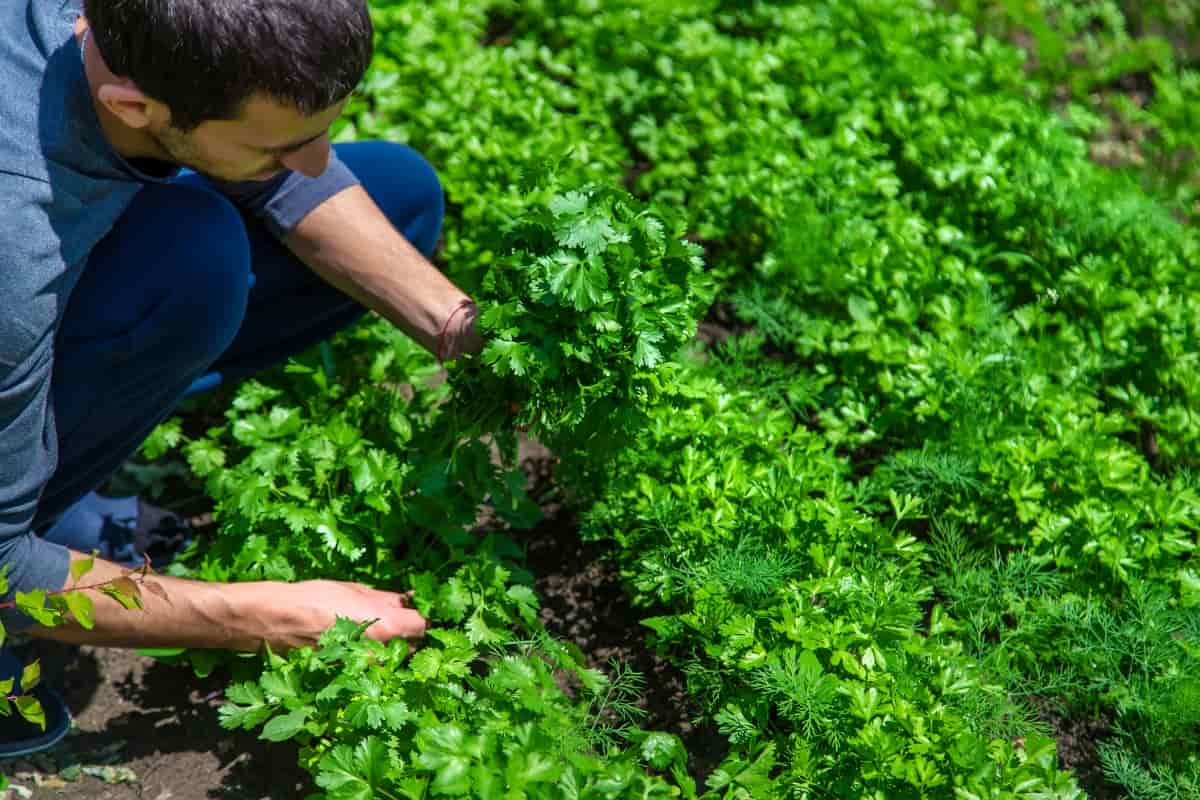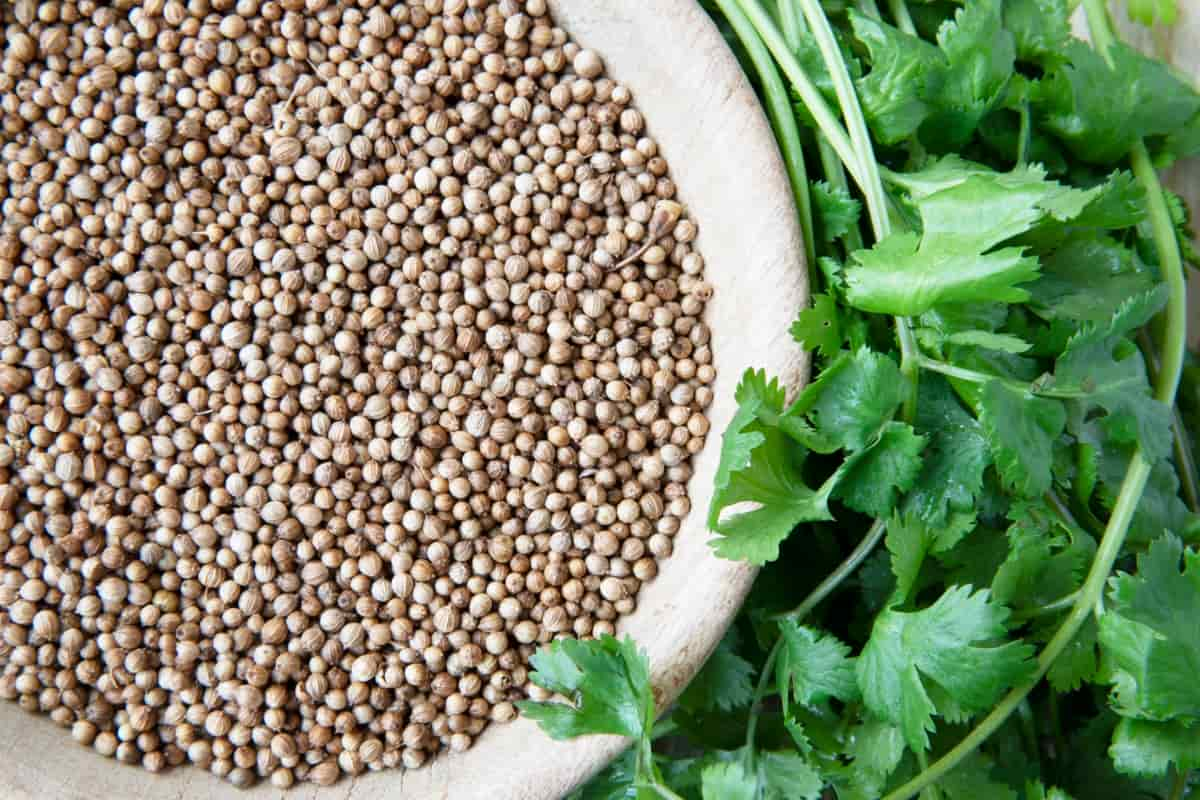Companion planting is a centuries-old practice of growing specific plants close to one another for mutual benefits, such as deterring pests, promoting pollination, and improving soil fertility. When discussing cilantro, one of the most aromatic herbs, certain plants work harmoniously with it, enhancing its growth and yield.

Understanding the best companion plants for cilantro, what grows well with cilantro, and even what you should not plant next to cilantro can make all the difference in a garden. From cilantro companion herbs to the unique benefits these partnerships offer, this guide delves deep into the intricacies of cilantro and its companions.
Benefits of Companion Plants for Cilantro in the Garden
Delving into the world of companion plants for cilantro, the benefits are multifaceted. When cilantro shares its space with other compatible plants, its growth gets promoted, and the overall health of the garden improves. Pests that may usually find cilantro irresistible might be repelled by its companion, ensuring a bountiful harvest. Moreover, these partnerships can increase pollination, leading to better yields. Not just cilantro, its companion plants also derive similar benefits, making this practice a win-win for gardeners.
Best Companion Plants for Cilantro to Deter Pests
Cilantro, like many herbs, is susceptible to certain pests. But, with the right companion plants, these tiny invaders can be kept at bay. Marigolds and basil are two of the best companions for cilantro in this regard. The potent fragrance serves as a natural deterrent, perplexing and repelling potential pests that would otherwise be drawn to cilantro. Another excellent choice is spinach. Not only does it deter specific pests, but its dense growth can act as a protective barrier, ensuring that cilantro remains untouched and thrives.
Cilantro Companion Plants for Improved Pollination
Enhancing pollination is a key benefit of choosing the right cilantro companion plants. When planted near cilantro, flowers like nasturtiums and cosmos attract pollinators, including bees and butterflies. This increased activity boosts the pollination rates of the entire garden patch, ensuring that cilantro and its companions bear more prolific fruits or seeds. Thus, ensuring a selection of flowering companions for your cilantro can yield rich dividends in the form of a bountiful harvest.
Companion Plants for Cilantro in Containers
Growing cilantro in containers is a common practice for those with space constraints. And even in these compact spaces, the right companions can make a difference. Plants like chives and parsley, with similar watering and sunlight needs, can be paired with cilantro in pots. Their similar growth patterns ensure neither overshadows the other, and they can create a mini-herbal haven on your balcony or windowsill.
Companion Herbs for Cilantro in Organic Gardening
Organic gardening emphasizes natural processes and sustainable practices. Cilantro companion herbs play a pivotal role in such setups. Herbs like dill and basil complement cilantro in taste and their growth needs and habits. Together, they can form a tight-knit unit, repelling pests and fostering an environment conducive to each other’s growth. In the organic paradigm, these herb partnerships enrich the soil and make for a flavorful harvest.
Flowering Companion Plants for Cilantro to Attract Beneficial Insects
Beyond pollinators, certain beneficial insects can keep harmful pests in check. Flowering companions like calendula and sunflowers attract ladybugs and lacewings, predators of many common pests. By inviting these natural defenders into the garden, cilantro can grow with reduced threat from pests, negating the need for chemical interventions. Such symbiotic relationships underscore the magic of nature and the interconnectedness of life in a garden ecosystem.
In case you missed it: 10 Common Problems With Cilantro Plants: How to Fix, Treatment, and Solutions

Companion Vegetables for Cilantro in Raised Beds
Raised beds are another innovation for gardening enthusiasts, offering controlled environments and easy access. Vegetables like lettuce and carrots are excellent for cilantro in raised beds. With their non-competing root structures, these veggies ensure that both they and cilantro get their fair share of nutrients from the soil. Additionally, the shade provided by taller veggies can offer a cool respite to cilantro, especially in hotter months, ensuring it doesn’t bolt too soon.
Companion Plants for Cilantro to Improve Soil Fertility
A thriving garden is as much about the plants above the ground as it is about the health of the soil beneath. Beans and peas, being legumes, are known to fix nitrogen in the soil, a nutrient vital for cilantro. One can ensure a steady supply of essential nutrients by partnering cilantro with these legumes, fostering healthier plant growth. Such partnerships underscore the importance of looking beneath the surface and ensuring the unseen aspects of a garden are as harmonious as the visible ones.
Companion Plants Chart for Cilantro in the Garden
- For Deterrence of Pests: Marigolds, Basil, Spinach
- For Improved Pollination: Nasturtiums, Cosmos
- For Containers: Chives, Parsley
- For Organic Gardening: Dill, Basil
- To Attract Beneficial Insects: Calendula, Sunflowers
- For Raised Beds: Lettuce, Carrots
- To Improve Soil Fertility: Beans, Peas
Remember, while companion planting is an age-old practice backed by experience and science, individual results might vary based on specific conditions. However, with the right knowledge and patience, a garden with cilantro and its companions can be a vibrant and productive space.
Proximity Considerations for Cilantro Companions
While understanding which plants to grow alongside cilantro is pivotal, being aware of the spatial arrangement is equally essential. It’s about planting them together and how closely or far apart they are. For example, while marigolds deter pests, placing them immediately next to cilantro might hinder their growth due to root competition. Thus, positioning them at an optimal distance is key. Similarly, taller plants that provide shade shouldn’t overshadow the cilantro entirely but rather provide dappled sunlight.
Understanding What You Should Not Plant Next to Cilantro
Knowledge about companion plants would be incomplete without discussing the bad companion plants for cilantro. Certain plants, like fennel, can inhibit cilantro’s growth due to their allelopathic properties. Similarly, while cilantro loves moisture, water-heavy plants might lead to an excessively damp environment, making cilantro susceptible to root rot. Awareness and keeping these detrimental companions at a distance can prevent potential gardening mishaps.
In case you missed it: Frequently Asked Questions About Coriander/Cilantro Farming

Conclusion
The art of companion planting with cilantro offers a symphony of mutual benefits, creating a harmonious environment where each plant thrives and supports the other. From boosting pest resistance to enhancing soil fertility, the right companions can dramatically elevate the gardening experience. However, as with all things in nature, balance is crucial. Considering what to plant, where to place them, and which plants to avoid can ensure a thriving garden where cilantro stands tall and robust amidst its companions.
- Feed Your Flock for Less: Top 10 Tips to Save on Chicken Feed
- Ultimate Guide to Ossabaw Island Hog: Breeding, Raising, Diet, and Care
- Hatching Answers: The Top 10 Reasons Your Chickens Aren’t Laying Eggs
- Eggs and Economics: Breaking Down the Cost of Raising Backyard Chickens
- Defend Your Greens: Proven Methods to Keep Iguanas Out of Your Garden
- Ultimate Guide to Cinnamon Queen Chicken: A Comprehensive Guide for Beginners
- Ultimate Guide to California Tan Chicken: Breeding, Raising, Diet, Egg-Production and Care
- Ultimate Guide to Marsh Daisy Chicken: Breeding, Raising, Diet, and Care
- 10 Types of Chicken Farming Businesses You Can Start for Profits